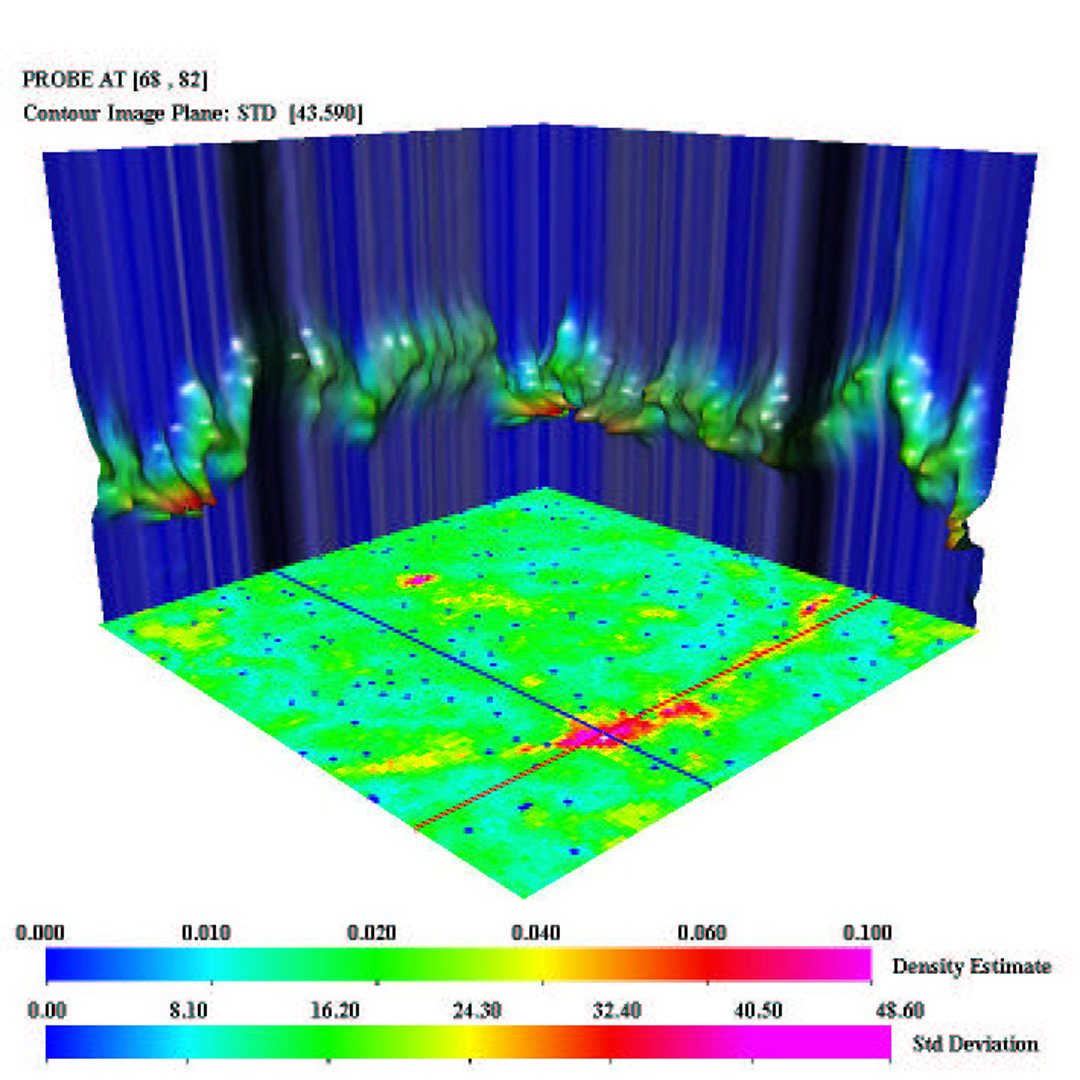“Picturing data with uncertainty” by Kao, Love, Dungan and Pang
Conference:
Type(s):
Entry Number: 104
Title:
- Picturing data with uncertainty
Presenter(s)/Author(s):
Abstract:
NASA is in the business of creating maps for scientific purposes to represent important biophysical or geophysical quantities over space and time. For example, maps of surface temperature over the globe tell scientists where and when the Earth is heating up; regional maps of the greenness of vegetation tell scientists where and when plants are photosynthesizing. There is always uncertainty associated with each value in any such map due to various factors. For example, exactly where on Earth’s surface does a given pixel represent? There could also be cloud and atmospheric contamination in the images taken from satellites. When uncertainty is fully modeled, instead of a single value at each map location, there is a distribution expressing a set of possible outcomes at each location. We consider such distribution data as multi-valued data since it consists of a collection of values about a single variable. Thus, a multi-valued data represents both the data and its uncertainty. We have been working on ways to visualize spatial multi-valued data sets effectively for fields with regularly spaced units or grid cells such as those in NASA’s Earth science applications. Successful uncertainty visualization would improve the understanding of climate change, one of the goals in NASA’s mission to understand and protect our home planet.
References:
1. Johnson, C., and Sanderson, A. 2003. A next step: Visualizing errors and uncertainty. In Computer Graphics and Applications 2003, IEE Computer Press, 6–9.
2. Kao, D., Luo, A., Dungan, J., and Pang, A. 2002. Visualizing spatially varying distribution data. In Proceedings of the 6th International Conference on Information Visualization ’02, IEEE Computer Society, 219–225.




